Towards Statewide and 3-D Deformation Fields for California
Date: September 7, 2024 (9:30 am – 5:30 pm)
Location: Hilton Palm Springs, California
Workshop Organizers: Mike Floyd (MIT) , Katia Tymofyeyeva (NASA JPL)
SCEC Award and Report: 24074
The SCEC Community Geodetic Model (CGM) is a long-term effort to integrate GNSS and InSAR data from the modern satellite-based geodetic era in a self-consistent, rigorous, and open manner. This integration aims to derive secular and time-dependent surface velocity and strain rate fields across California.
We hosted a one-day CGM Workshop in conjunction with the SCEC Annual Meeting on Saturday, September 7th, 2024, at the Hilton Palm Springs in California. The workshop aimed to identify key research issues, educate users, and address critical questions in the context of SCEC science goals. We invited diverse expertise to contribute to and benefit from extending the CGM’s temporal and geographic range statewide.
The workshop announcement targeted current or potential users and contributors, encouraging early-career students, postdocs, researchers, and faculty to help shape the next generation of the CGM. Due to space limitations, interested individuals were asked to apply in advance. We accommodated 28 in-person participants and one online participant.
The workshop featured initial presentations to introduce recent research by CGM Working Group members and the wider community, demonstrations of CGM activities, products and access to date, breakout groups for feedback and input, and open discussions to map out pressing research and future directions.
In our original workshop proposal, we aimed to achieve two major outcomes: (1) expanding geographic interest and CGM contributors/users, and (2) providing guidance for geodesy in general and the CGM specifically during years 2 and 3 of the current Statewide California Earthquake Center. The workshop successfully attracted participants, especially those focused on northern California, thereby broadening geographic scope and expertise. We also encouraged early-career participants to attend and have their voices heard. We received detailed feedback and priorities for future CGM development. Immediate tasks include improving product accessibility, advertising, exploration, and providing searchable online documentation and metadata with working examples. We concluded with renewed enthusiasm for the collective effort and increased awareness among the geodetic and user communities. The SCEC CGM was prominently mentioned in presentations and posters throughout the remainder of the SCEC Annual Meeting.
Presentation materials may be viewed by clicking the links below. PLEASE NOTE: Files are the author’s property. They may contain unpublished or preliminary information and should only be used for reviewing the talk. Only the presentations for which SCEC has received permission to post publicly are included below.
| Time | Item | Presenter |
|---|---|---|
09:00 - 09:30 | Workshop Check-In |
|
09:30 - 09:45 | Introduction and Opening Remarks by Hosts | Mike Floyd and Katia Tymofyeyeva |
09:35 | Background and motivation for the Community Geodetic Model | |
09:45 - 11:00 | Session 1a: Current Research and Considerations for Geodetic Products and Models | |
09:45 | The future of InSAR: NISAR and beyond | |
10:05 | Reference frames: Definitions, realizations, and impacts (PDF) | |
10:25 | GNSS and InSAR integration for 3-D crustal deformation in California (PDF) | |
10:45 | Questions and Discussion | All |
11:00 - 11:15 | Break | |
11:15 - 12:10 | Session 1b: Use of a Community Geodetic Model for Tectonics and Geophysics | |
11:15 | Integrating InSAR and GNSS for the Intra-Frame Deformation Model (PDF) | Lane Souza |
11:35 | Addressing long-term changes in crustal deformation from tectonic and non-tectonic processes (PDF) | |
11:55 | Questions and Discussion | All |
12:10 - 13:00 | Session 2: CGM Version 2 Products and Access, and Community Velocity Field Exercise | |
12:10 | Demonstration of SCEC CGM Explorer and Zenodo archive | Various |
12:25 | Review of data formats and basic interrogation tools | |
12:40 | Introduction of a Community Velocity Field Exercise | |
12:50 | Open discussion on participation in and contribution to Community Velocity Field Exercise | All |
13:00 - 14:00 | Lunch |
|
14:00 - 15:30 | Session 3: Breakout Discussions | |
| 14:00 | Breakout 1: Cross-disciplinary discussion groups | All |
14:30 | Breakout 2: Intra-disciplinary discussion groups (guided by topics and other brought up by cross-disciplinary discussion groups) | All |
15:00 | Reports from breakout discussions | |
15:30 - 15:45 | Break | |
15:45 - 17:30 | Session 4: The Future of the CGM and How to Get There | |
15:45 | Discussion: How do we develop from velocities and time series to combined geodetic products and model deformation fields? | All |
16:30 | Discussion: Workshop recommendations and future plans for StatewideCEC | All |
17:15 | Closing remarks by hosts | |
17:30 | Workshop Adjourns |
|
SCEC5 Workshops
November 9 – 10, 2021
September 7, 2019
March 12-13, 2018
SCEC4 Workshops
January 28 – 29, 2016
September 6, 2014
May 30-31, 2013
September 9, 2012
CEMs are collaborative platforms featuring community-contributed data, models, and tools for earthquake system analysis. They enable 3D visualization, data exploration, sharing, and integrated modeling. The current SCEC Community Geodetic Model (CGM) integrates high-precision GNSS and InSAR data for continuous, detailed ground movement monitoring in Southern California.
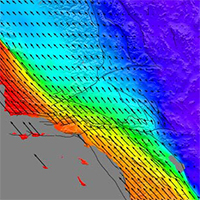
Community Geodetic Model (CGM) Explorer
Earth surface displacement from GNSS and InSAR
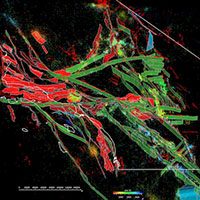
Community Fault Model (CFM) Explorer
3D geometric representations of faults in California
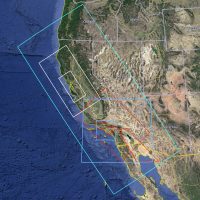
Unified Community Velocity Model (UCVM)
seismic velocities for several California regions

Community Stress Model (CSM) Explorer
suite of models of stress and stressing rate
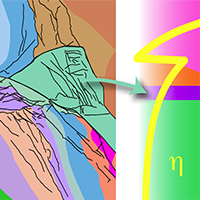
Community Rheology Model (CRM) Viewer
3D ductile rheology of lithosphere in S. California
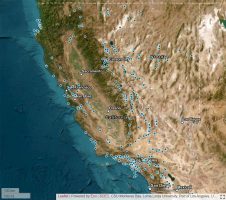
Geologic Slip Rate Database (GSRD)
geologic slip rates for CA, NV, and northern Mexico
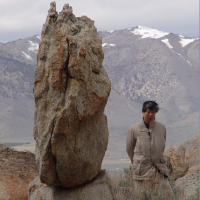
Precariously Balanced Rock (PBR) Database
field-derived data for PBRs in California
The 2024 SCEC CGM Workshop will address critical questions, framed in the context of SCEC science goals, including:
| First Name | Last Name | Organization | Name and Org |
|---|---|---|---|
| Matt | Brandin | UCSD | |
| Roland | Burgmann | UC Berkeley | |
| Guo | Cheng | UNR | |
| Nairong | Du | UW Madison | |
| Mike | Floyd | MIT | |
| Gareth | Funning | UCR | |
| Ignacio | Garcia | CICESE | |
| Alejandro | Gonzalez-Ortega | CICESE | |
| Thomas | Herring | MIT | |
| Celeste | Hofstetter | UCR | |
| William | Holt | Stony Brook U | |
| Junle | Jiang | U Oklahoma | |
| Stacy | Larochelle | Columbia U | |
| Li-Chieh | Lin | UCR | |
| Danielle | Lindsay | UC Berkeley | |
| Zhen | Liu | Caltech | |
| Kathryn | Materna | CU Boulder | |
| Rob | Moak | Tensora | |
| Laurent | Montesi | U Maryland | |
| Taimi | Mulder | NRCan | |
| Jillian | Pearse | CSULB | |
| Megan | Perry | U Maryland | |
| Zheng-Kang | Shen | UCLA | |
| Lavoisiane Ferreira de | Souza | UCSD | |
| Mradula | Vashishtha | Stony Brook U | |
| Yuehua | Zeng | USGS |
The Statewide California Earthquake Center (SCEC) fosters a diverse and inclusive community where everyone feels safe, productive, and welcome. We expect all participants in SCEC-supported events to uphold this commitment by adhering to the SCEC Activities Code of Conduct.
The SCEC Annual Meeting brings together 400-500 participants worldwide to share breakthroughs, assess progress, and chart a collaborative path for earthquake science. All of the Center activities are presented, analyzed, and woven into a set of priorities for SCEC to pursue in the future.